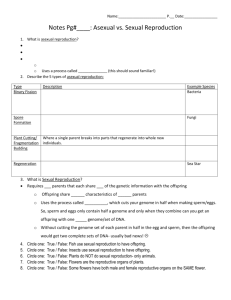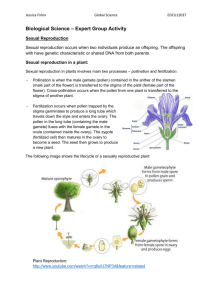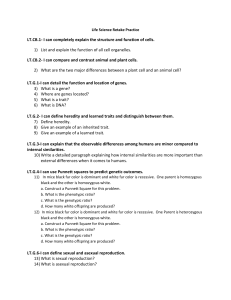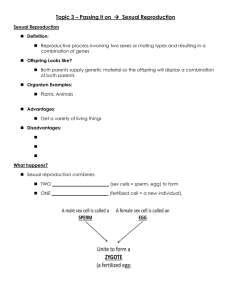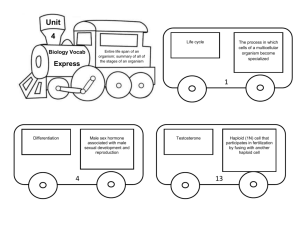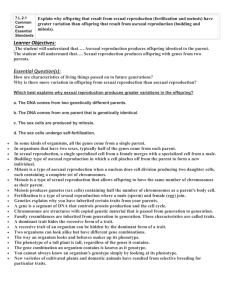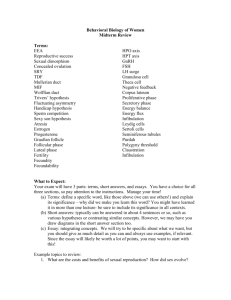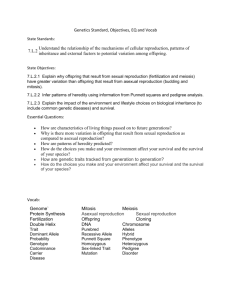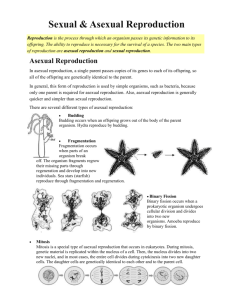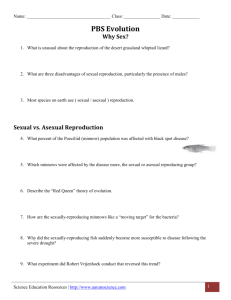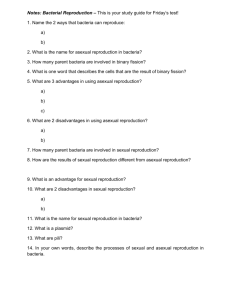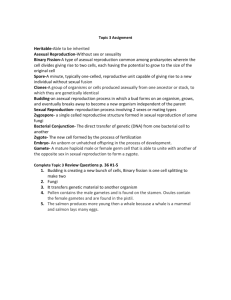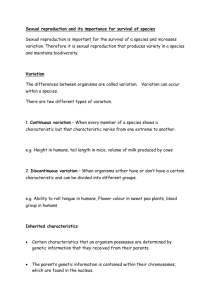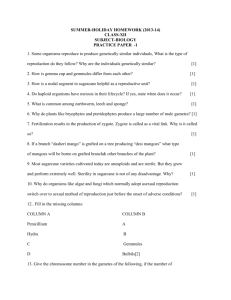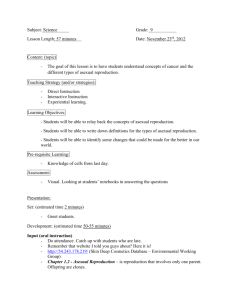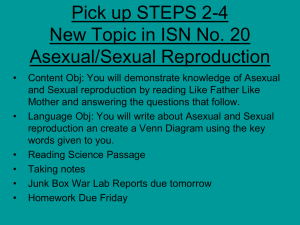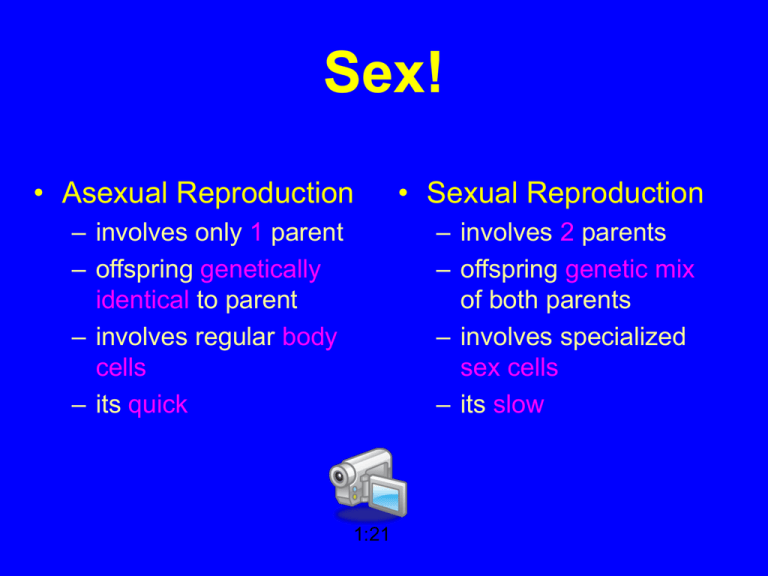
Sex!
• Asexual Reproduction
– involves only 1 parent
– offspring genetically
identical to parent
– involves regular body
cells
– its quick
• Sexual Reproduction
– involves 2 parents
– offspring genetic mix
of both parents
– involves specialized
sex cells
– its slow
1:21
Binary Fission
Rod-Shaped Bacterium,
hemorrhagic E. coli
2 daughter cells are identical to parent
Budding
Spore Formation
Fern
Fungi
Vegetative
Reproduction
Sexual Reproduction in Animals
• involves specialized sex cells called gametes
• the union of a male and female gamete results
in the formation of a zygote that develops into a
new individual
Sexual
Reproduction in
Plants
Female Parts
Male Parts
(Pistil)
pollen (male) + ovule (female) → single-celled zygote → multi-celled
embryo (contained in a seed) → new individual
Sexual Reproduction Summary
Male
Gamete
Female
Gamete
Type of
Union
Result of
Union
Final
Result
Plants
pollen
ovule
(egg)
pollination
single cell
zygote
multi-cell
embryo
(in seed)
Animals
sperm
egg
fertilization
single cell
zygote
multi-cell
embryo
Some Organisms do Both
• most plants that produce seeds (sexual
reproduction) can also reproduce
asexually by things like cuttings or runners
• this gives them an advantage for survival
sponges and hydra
mosses
Which is Better?
It depends!
Asexual Reproduction
• advantages
– does not require special
cells or a lot of energy
– can produce offspring
quickly
– in a stable environment
creates large, thriving
population
• disadvantages
– limited ability to adapt
– face massive die-off if
environment changes
Sexual Reproduction
• advantages
– lots of variation within a
species
– able to live in a variety
of environmental
settings
– able to adapt to changes
in the environment
• disadvantages
– needs time & energy
– produce small
populations





